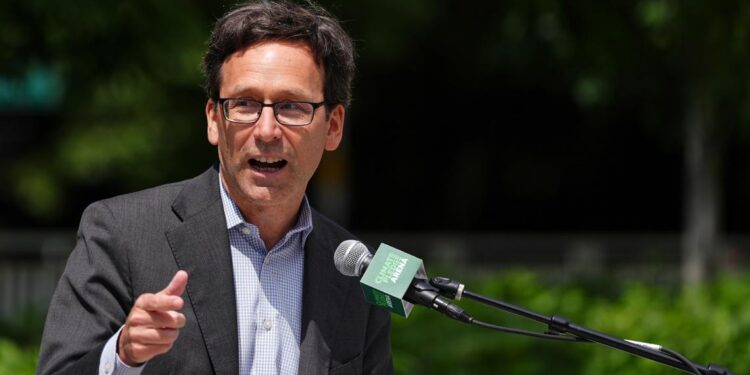Washington state’s revenue collections are projected to fall $903 million short of June forecasts through 2029, according to estimates released Tuesday by the Economic and Revenue Forecast Council, creating budgetary challenges for Governor Bob Ferguson’s administration.
The revenue decline reflects weaker performance across multiple economic sectors, including reduced taxable sales in retail and construction, lower state agency revenues, and decreased real estate excise tax collections. The shortfall represents a significant adjustment from earlier projections based on stronger economic assumptions.
Ferguson acknowledged his budget team had anticipated weaker revenue numbers while attributing additional fiscal pressures to federal policy changes. “Today’s forecast is disappointing, but not surprising,” Ferguson said, referencing what he termed “President Trump’s Big Betrayal Bill” affecting federal funding for programs including Medicaid and child nutrition.
The governor emphasized that approximately 28% of Washington’s budget relies on federal investments, making federal cuts particularly impactful for state operations. “As I write my first budget, I will be focused on delivering a balanced budget that maintains core services,” Ferguson stated.
Dave Reich, executive director of the forecast council, characterized the September projections as reflecting “slower growth in the near-term reflecting a slowing national economy and leading to reduced Washington state revenues from what was expected in June.”
K.D. Chapman-See, director of the Office of Financial Management, indicated the state had prepared for potential revenue declines. “Given the ongoing uncertainty in the economy and around federal funding, OFM continues to carefully monitor the state’s financial outlook,” Chapman-See said.
Washington’s employment data reinforced economic cooling trends, with preliminary Bureau of Labor Statistics figures showing nonfarm employment declined by 13,600 jobs in August. Private-sector employment dropped by 15,100 positions while public-sector jobs increased by 1,500.
Year-over-year comparisons revealed net job losses of 5,400 positions statewide, including 6,800 public-sector job reductions offset partially by 1,400 private-sector additions.
Despite employment fluctuations, Washington’s seasonally adjusted unemployment rate remained steady at 4.5% in August, unchanged from July and matching the August 2024 rate.
The revenue shortfall occurs as Ferguson prepares his first supplemental budget proposal, requiring careful balance between maintaining essential services and adapting to reduced fiscal capacity.
Economic uncertainties affecting Washington mirror national trends of slower growth and reduced consumer spending that have impacted state revenue streams across multiple categories.
The forecast council’s projections will guide budget development as state officials navigate competing priorities amid constrained resources and potential federal funding reductions.
State financial managers indicated continued monitoring of economic indicators to adjust fiscal planning as conditions evolve through the remainder of the fiscal year.







